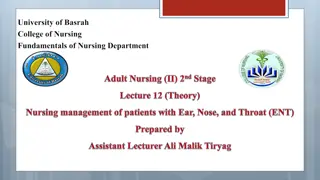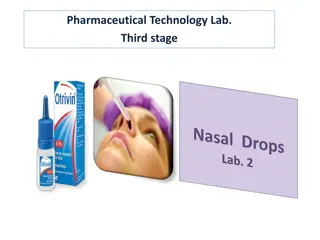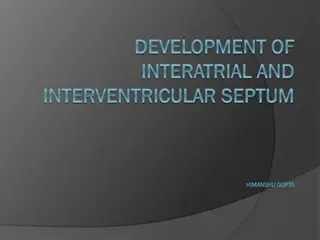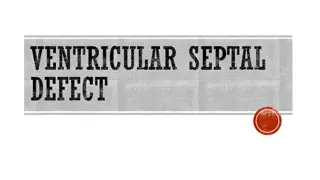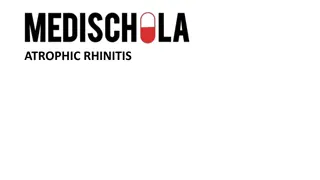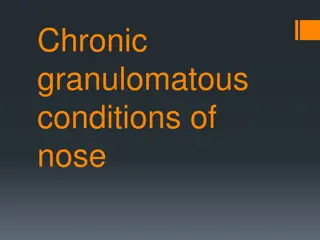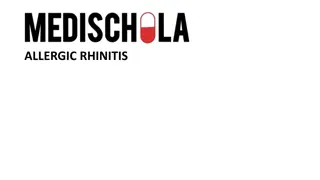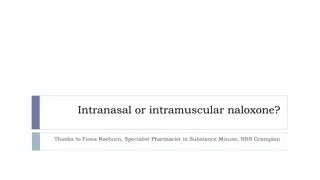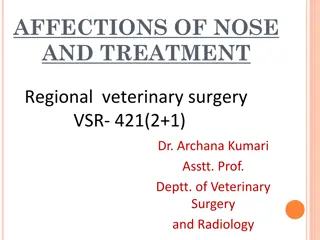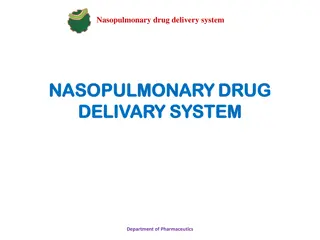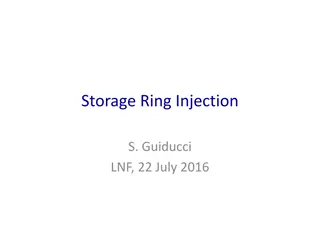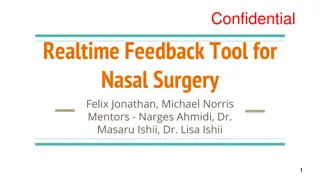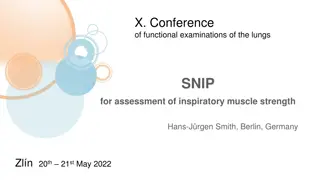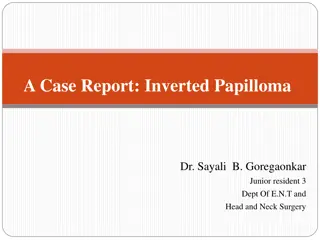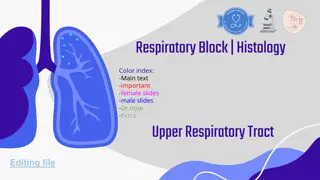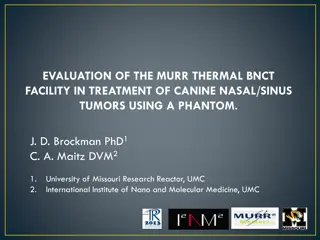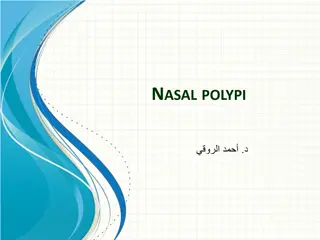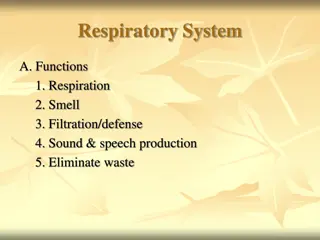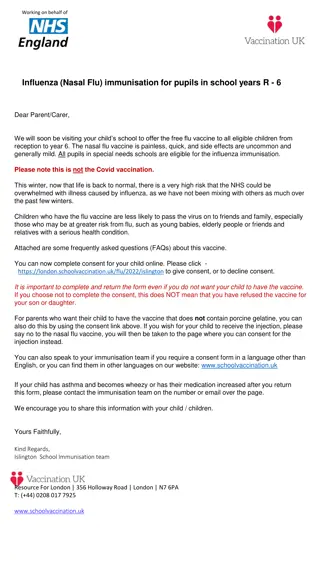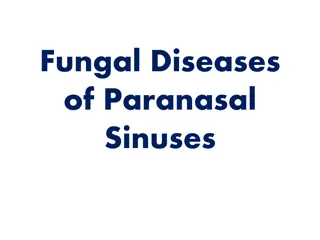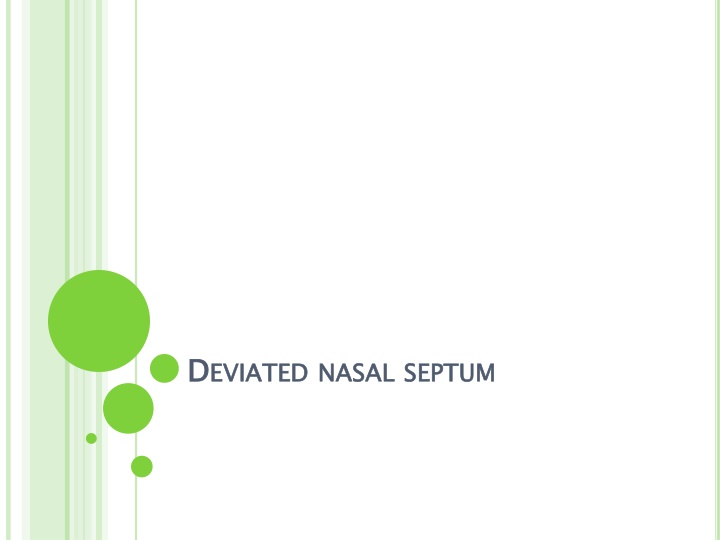
Understand Deviated Nasal Septum Disorder
Learn about deviated nasal septum (DNS), its causes, pathophysiology, signs, symptoms, diagnostic measures, and management options including medications and nasal strips for symptomatic relief.
Download Presentation

Please find below an Image/Link to download the presentation.
The content on the website is provided AS IS for your information and personal use only. It may not be sold, licensed, or shared on other websites without obtaining consent from the author. If you encounter any issues during the download, it is possible that the publisher has removed the file from their server.
You are allowed to download the files provided on this website for personal or commercial use, subject to the condition that they are used lawfully. All files are the property of their respective owners.
The content on the website is provided AS IS for your information and personal use only. It may not be sold, licensed, or shared on other websites without obtaining consent from the author.
E N D
Presentation Transcript
D DEVIATED EVIATED NASAL NASAL SEPTUM SEPTUM
Nasal septum deviation or deviated nasal septum (DNS) is a physical disorder of the nose involving a displacement or deflection of the nasal septum Some degree of displacement is common. Affecting 80% of people unknowingly
CAUSES Trauma blow to the face Congenital disorder compression of nose during child birth Genetic connective tissue disorders marfan syndrome Pressure from massess
PATHOPHYSIOLOGY Nasal septum in the nose separates the nasal cavity into two nostrils Normally septum lies centrally and thus the nasal passages are symmetrical A deviated septum is an abnormal condition in which the top of the cartilaginous ridge leans to the left or the right causing obstruction of the affected nasal passage
SIGNS AND SYMPTOMS Only more severe cases of deviated septum will cause symptoms Difficulty breathing Infections of the sinus Sleep apnea Snoring Repetitive sneezing Facial pain Nose bleeds Mild to severe loss of the ability to smell
DIAGNOSTIC MEASURES History collection Physical examination nose examination with a pen torch X ray
MANAGEMENT In mild cases symptomatic treatment Medications decongestants, antihistamines and nasal spray Medications will relieves only the symptoms but does not correct the underlying condition Nasal strip - A nasal strip strip type of adhesive bandage with embedded plastic ribs or splints that is applied across the bridge of the nose and sides of the nostrils, to assist in keeping the airway open. nasal strip, external nasal dilator strip or nasal dilator strip external nasal dilator nasal dilator strip is a
NASAL INHALATION
Remove cap form the nasal inhaler Shake the container well Hold the inhaler between the thumb and forefinger Tilt the head back, slightly and insert the end of the inhaler in to the nostril, mean while close the other nostril. Press down the container to release one dose and at the same time inhale gently Ask the patient to hold the breath for a few seconds then breath out slowly through mouth Withdraw the inhaler from the nostril and repeat with other nostril Replace the cap after usage
Surgical management hours) complete healing occur within 2 days to 4 weeks The surgeon makes a incision through the mucosa at the caudal end of the septal cartilage, elevates the septal mucous membranes, and separates the septal cartilage from its bony attachments and straightens it . After that nasal septal splints made of plastic is inserted Nose may be packed for several days to prevent hematoma formation Complications of Infection Bleeding Hole (perforation) of the septum Loss of the ability to smell Surgical management septoplasty septoplasty (1-2 Complications of septoplasty septoplasty
Rhinoplasty A plastic surgery procedure for correcting and reconstructing the form, restoring the functions Open and closed rhinoplasty is there Rhinoplasty cosmetic surgery Rhinoseptoplasty corrective surgery Rhinoseptoplasty combined cosmetic and septal
NURSING MANAGEMENT Assess the signs of hemorrhage on nasal dressing, bright red vomitus, repeated swallowing(check back of throat with a pen light for blood running down throat), rapid pulse, restlessness hemorrhage excessive blood Assess for signs of infection- fever, elevated white blood cell count.
TAKE MEASURES TO RELIEVE DISCOMFORT AND PROMOTE EFFECTIVE BREATHING Place patient in mid fowler s position to decrease local edema Provide cool mist via face tent Apply ice compresses over nose for 24 hours Provide psychological support and sedation if needed Use flashlight or penlight to examine back of throat to check packing has not slipped to back Provide frequent oral care Change dressing under nose as needed
Promote good nutrition provide increased amount of fluid Instruct the patient to : Avoid blowing nose for 48 hours after packing has been removed Avoid constipation and straining Expect stools to be tarry Expect face to be discolored around eyes and nose for several days Instruct the patient to :

